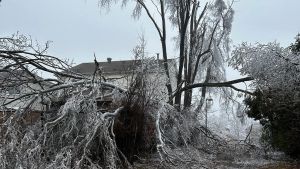Ontario contractors are being urged to stay on top of regulatory changes as they negotiate an ever-changing labour landscape during the province’s recovery from the COVID-19 pandemic.
The legal advice on employment and human-resources pinchpoints was dispensed to members of the League of Champions during a recent webinar held June 17.
Construction labour lawyers Norm Keith, partner at Fasken Martineau DuMoulin, and Mike Sherrard, partner at Sherrard Kuzz, said contractors are currently dealing with a multitude of confusing new wrinkles to Ministry of Labour reporting obligations, health and safety requirements and Employment Standards Act regulations that did not exist three months ago.
“Stay up to date,” Sherrard urged the webinar viewers. “There is so much coming at us as the regulations are changing.”
Even the two lawyers found themselves debating whether one case of COVID-19 on a jobsite or a “cluster” of cases triggers certain reporting responsibilities. Communication with the Ministry of Labour, public health officials and the Workplace Safety and Insurance Board (WSIB) are all expected.
It is not going to impact your loss of earnings or your claim history,
— Mike Sherrard
Sherrard Kuzz
“What I learned from a couple of cases, when public health…finds out from two different workers who have tested positive that they both work at the same place, even without connecting them in terms of co-workers on the same shift, all they really need is same employer address,” commented Keith. “They tend to react or maybe over-react and they will notify the Ministry of Labour because they, in their lexicon at public health, are saying, two workers testing positive at the same workplace, that is their definition of a cluster.”
Unlike earlier in the pandemic, the WSIB is turning COVID-related cases around fairly quickly, within two to five days, said Sherrard, which means employers should be prepared with documentation.
It has been determined that a claim against an employer requires work-related exposure, and that the work “significantly contributed” to the illness.
As for good news, Sherrard said, the WSIB has determined that the claims are not going to be attributed to the illness employer.
“We know therefore it is not going to impact your loss of earnings or your claim history,” he remarked.
In reality, there had been only nine WSIB claims against construction employers as of the date of the seminar.
Moving on to labour relations and collective bargaining agreements, Sherrard noted employers and trade unions have frequently butted heads on the extended hours of work that the government granted employers.
“We have had lots of debate and discussion about how those agreements are to be applied to extended hours,” he reported. “Extended hours have been good not just for the purpose of getting production done but even something as simple as separating out the workers and trying to have more of an ability to adhere to some of the standards.”
Regulation 263/20 under the Emergency Measures act, which just came into effect June 16 to deal with stage two openings, also imposes new health and safety obligations on Ontario employers including those in the construction sector.
“For all of us that are open, there is a requirement to be complying with public health directions, so when you are looking at health and safety standards, keep paying attention to what public health is saying,” said Sherrard. “That is one of the challenges for all of us I think in the situation as an employer, you’ve got evolving regulations and it really is important to try to keep on top of those and how they impact specific workplaces.”
Earlier in June, the new Reg. 228/20 under the Employment Standards Act introduced reforms changing the status of certain laid-off workers from termination to deemed on emergency leave.
“That is very important because it is helping out employers…when they clearly didn’t intend to and many of the employees don’t want to be terminated or severed,” said Sherrard. “Those that aren’t back to work are still optimistic that employers in Ontario are going to bring them back to work. So 228 is a very important piece to take a look at if you haven’t yet, it provides a fair bit of relief as it applies to employment law liabilities.”
Contractors are also seeking help as they parse collective agreements trying to recall specific unionized trades workers.
“The recall one is probably the one we have given the most advice around, because we have had employers wanting to recall specific skills not necessarily in the order of the most senior worker or the one with the longest service, and that has created an issue,” said Sherrard.
“The pandemic isn’t allowing us to avoid collective agreements. We need to pay attention to those terms and conditions.”
Sherrard noted that employers and employees collaborated in unprecedented fashion during the early days of the pandemic and that should not stop now, he advised.
“My piece on communication is, many leaders don’t like to speak to their employees and their team without having everything nailed down and everything perfect,” he said. “I really commend leaders for speaking up with the best information they have at the time and speaking transparently to their folks.”
During an earlier session at the League of Champions event, Minister of Labour Monte McNaughton announced that the ministry is allocating $75,000 to support the League’s safety efforts. Commented McNaughton, “Together we are going to help League of Champions members have the best health and safety performance in the industry.”
Follow the author on Twitter @DonWall_DCN.











Recent Comments
comments for this post are closed